A selection of chosen illustrations: book covers, model box art, and other non-commercial works.

Battle of Angamos (1879)
On October 8, 1879, the final battle of the so-called Saltpeter War took place. The Peruvian armored ship “Huáscar” was surrounded, damaged and captured by Chilean warships. The illustration shows the duel between the “Huáscar” and the Chilean “Almirante Cochrane“.
Cover of the book The Naval War of Pacific, 1879-1884: Saltpeter War (MMP 2020)

Salmson 2 A.2 (1918)
Used since 1918 reconnaissance aircraft of French manufacture. Used, among others, by the 1st Air Squadron of the American Expeditionary Corps in France during World War I.
Cover of the cardboard model produced by WAK (2024)

Fokker E.V. (1919)
Single-seat, upper-wing fighter aircraft of mixed construction. Used by the Polish military aviation. On a plane of this type, Lieutenant Stefan Stec (7th Fighter Squadron) defeated a Ukrainian Nieuport 21 fighter plane escorting two Brandenburgs in an air battle over Lviv on April 29, 1919. It was the first Polish air victory.
Illustration for the cover of the book Fokker E.V. / D.VIII (Stratus 2018)
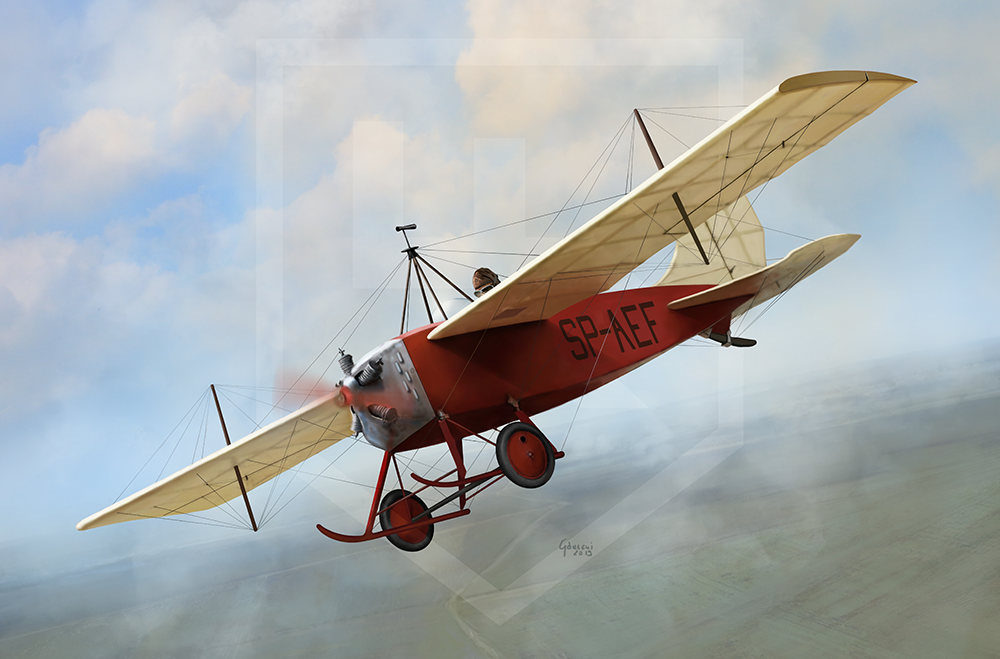
WZ-XI Kogutek (1927)
A school plane built by Wladyslaw Zalewski, flown in October 1927. It was the first sport aircraft developed from scratch in Poland and powered by a Polish engine
(2019)

Schreck FBA-17H (1930)
In flight over the Hel Peninsula. French patrol hydroplane, built in flying boat or amphibious versions. Designed and built in 1923 at the Hydravions Louis Schreck FBA aircraft factory in Argenteuil, France. It was used by the Naval Air Squadron in Puck.
Illustration for the cover of the book French Flying Boats 1924-1939 (Stratus 2019)

Renault FT (1930)
Light tank, of French manufacture. Produced in 1917-1919, these were the first tanks used by the Polish army. In 1939, during the defensive war, the Polish army still used tanks of this type. They were used in the composition of the 111th, 112th and 113th light (slow-moving) tank companies and as armored dragoons in the composition of armored trains.
Background, part of an exhibition at the Armament Museum at the Citadel in Poznan (2019)

PZL P.24 (1939)
The PZL P.24 was an export-oriented development of the PZL P.7 aircraft design adapted to Gnome-Rhone engines not used in Poland. The aircraft served in the air forces of Bulgaria, Greece, Romania and Turkey.
Boxart for IBG Models (2020)
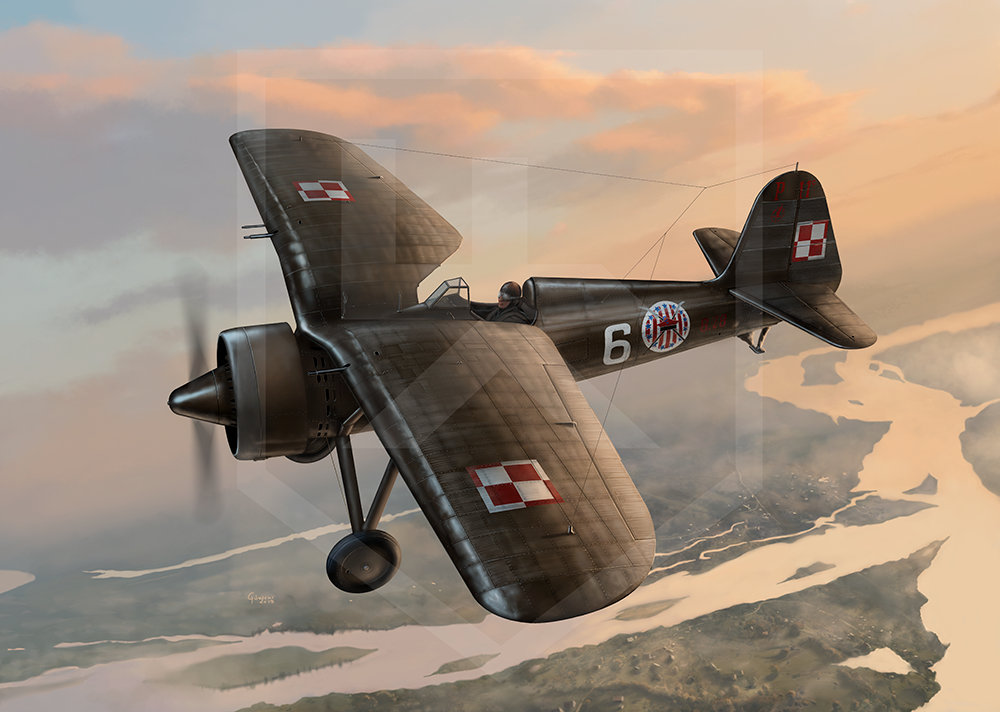
PZL P.11c (1939)
The Polish fighter aircraft, originating from the line of fighters designed by engineer Zygmunt Puławski. It was the primary Polish fighter during the defensive war in September 1939.
The illustration depicts a PZL P.11c from the 111th Fighter Squadron. Piloted by Janusz Maciński, it was damaged during combat with Bf-110 fighters.
Illustration for the IBG Models kit box. (2019)

Messerschmitt Bf-109E-1 (1939)
A German fighter aircraft, the primary fighter of the Luftwaffe during World War II. Produced throughout the war in various versions.
The illustration depicts a Messerschmitt Bf 109E from JG 76 in combat in September 1939.
Cover of the book September 1939 Over Poland. Part I. (Kagero 2024)

Dornier Do-17 (1939)
A German bomber and reconnaissance aircraft from World War II, also used in a night fighter version, produced by Dornier Flugzeugwerke. Due to its distinctive fuselage shape, it was nicknamed the “Flying Pencil.”
The illustration depicts the shooting down of a German Dornier Do 17 by Second Lieutenant Klawe over Nałęczów.
Cover of the book Brygada Pościgowa na lubelskim węźle lotnisk (Kagero 2024).

PZL P.11c “Łaciata 3” (1939)
PZL P.11c in a special experimental camouflage. Experts disagree on the colors used in this paint scheme.
Illustration for the IBG Models kit box. (2023)
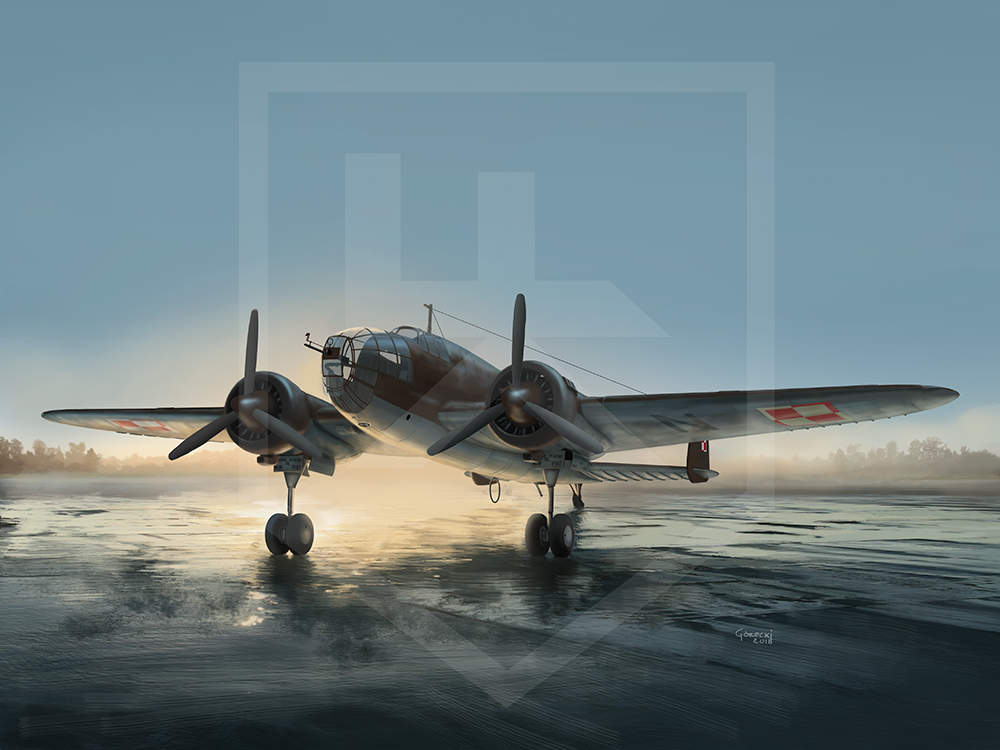
PZL P.37B Łoś (1939)
A medium twin-engine bomber designed by PZL, of Polish design and production.
It featured a low-wing monoplane configuration with an all-metal construction and retractable landing gear. Produced in two versions: A, with a single vertical stabilizer, and B, with a twin-tail configuration. It entered service with the Polish Air Force in 1938.
The illustration depicts a PZL P.37B Łoś standing at a Polish airfield.
Box art for IBG Models (2018).
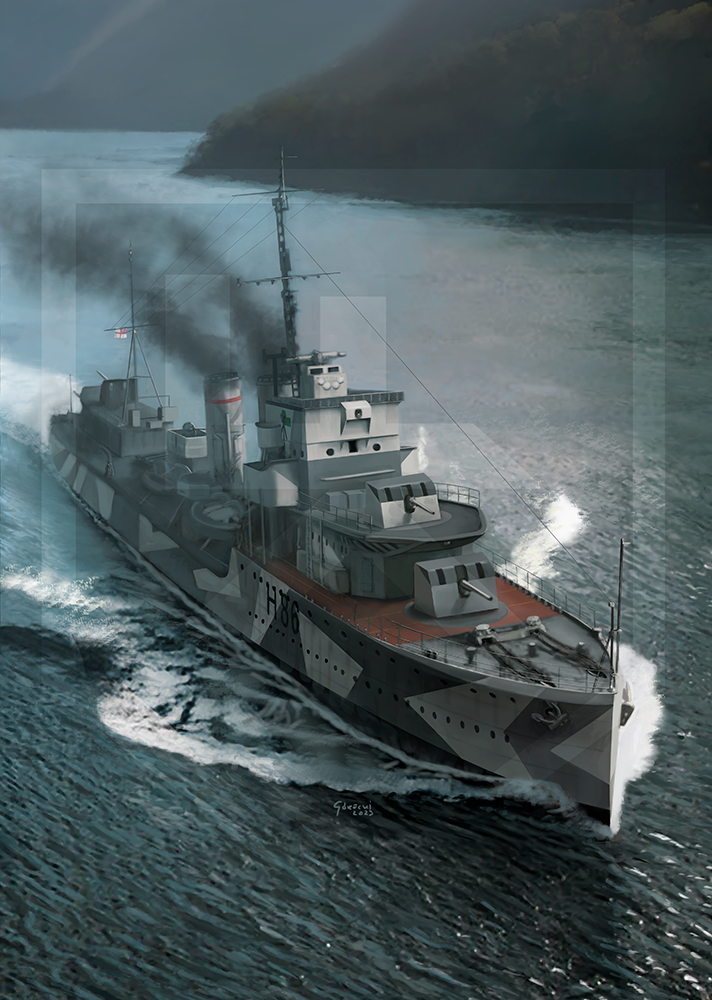
HMS GRENADE (1940)
The British G-class destroyer. It entered service in 1936. Bombed and sunk by Luftwaffe aircraft during the evacuation of Dunkirk on May 29, 1940.
The illustration depicts HMS Grenade in one of the fjords during the Norwegian Campaign in April 1940.
Cover of the cardboard model by WAK (2023).
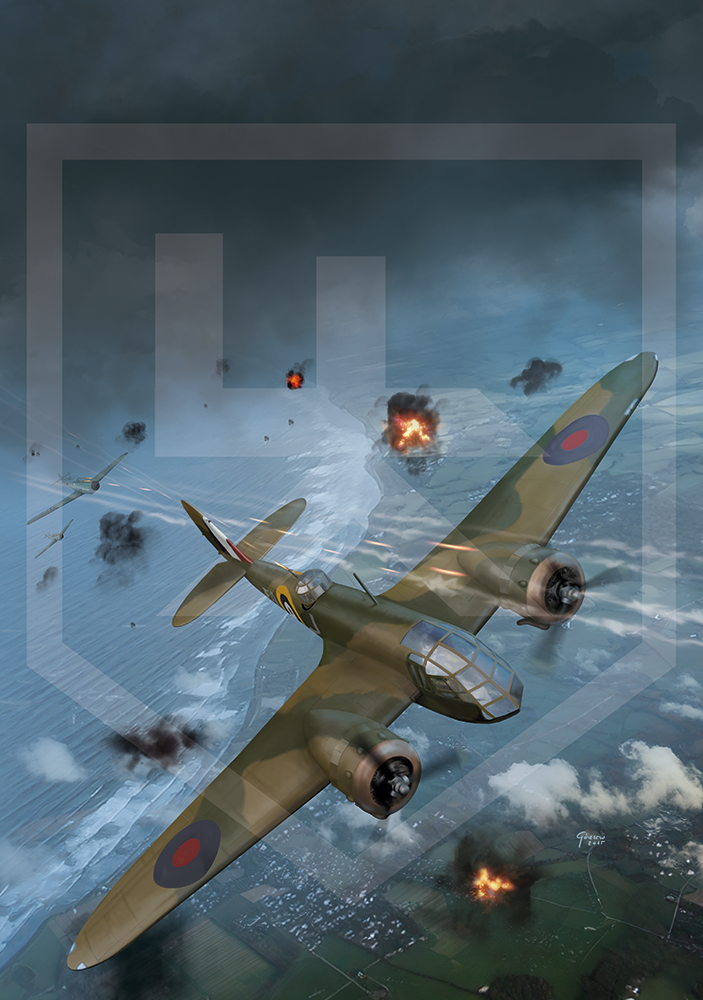
Bristol Blenheim Mk I (1940)
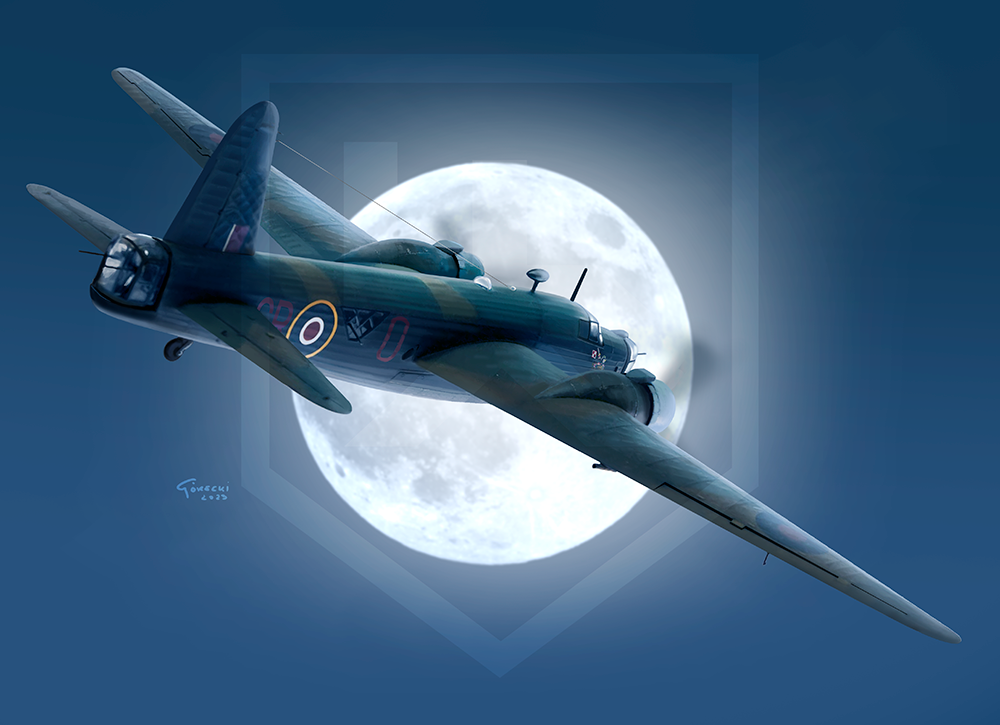
Vickers Wellington Mk IV (1942)
Vickers Wellington, belonging to No. 301 Bomber Squadron, flying on another bombing mission. (2023)
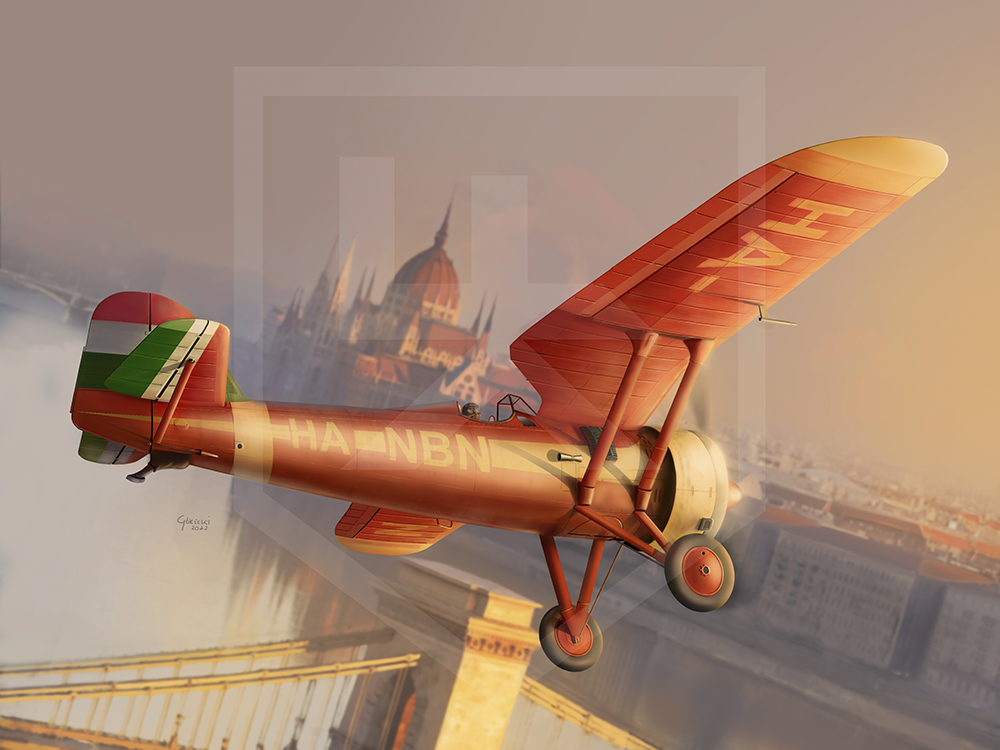
PZL P.11a (1943)
PZL P.11a used by the Hungarian Polytechnic Aeroclub in Budapest.
The illustration depicts the aircraft in flight over Budapest, with the Parliament building in the background.
Box art illustration for an IBG model kit. (2022)
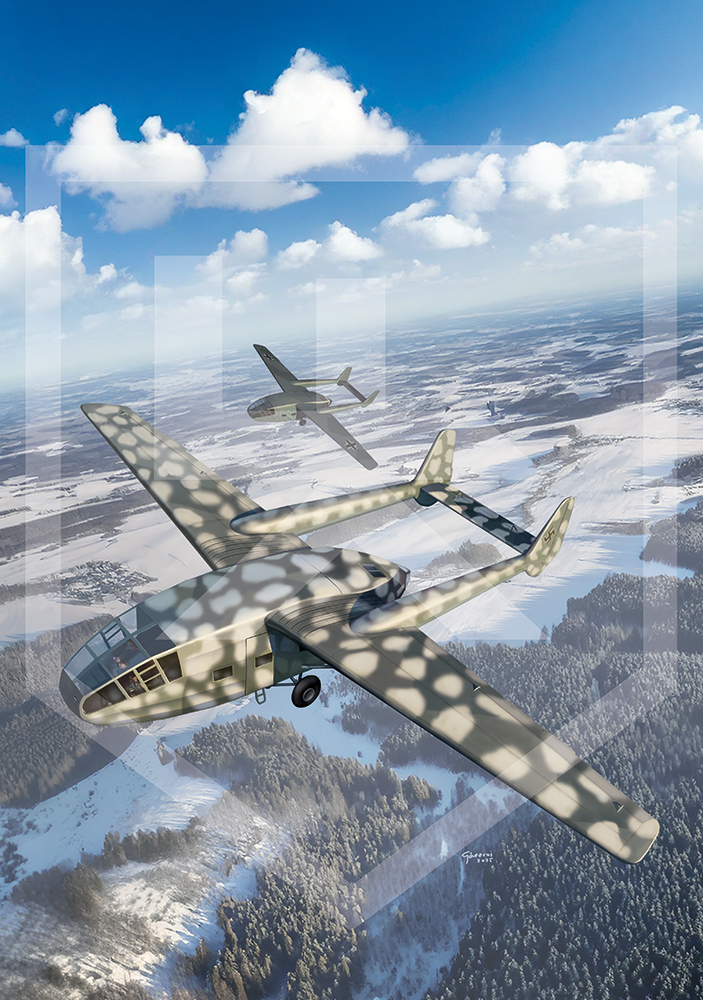
Gotha Go 242A-2 (1944)

Autoblinda AB43 (1944)
Italian armored car, a developed version of the Autoblinda 41.
Compared to the Autoblinda 41, it was equipped with significantly stronger armament (a 47 mm gun instead of a 20 mm cannon), improved armor, and a more powerful engine. Only a dozen or so units were produced before Italy’s capitulation, and these vehicles took part in combat exclusively on the Italian front.
Cover for a paper model by WAK. (2025)

Mitsubishi A6M Reisen Zero
The primary fighter aircraft of the Imperial Japanese Navy during World War II. The illustration depicts a battle that took place on June 24, 1944, between Japanese ace pilot Saburo Sakai and a dozen F6F Hellcats. In this encounter, he shot down two American aircraft.
Cover for the book A6M Reisen/Zero (Kagero 2021).

Jakowlew Jak-1b (1944)
Soviet fighter aircraft from 1940. It was the first in a family of fighter planes developed by the Yakovlev Design Bureau, which became the primary Soviet fighters of World War II.Yak-1b from the 1st Fighter Aviation Regiment, piloted by Edward Chromy.
Illustration for the Arma Hobby model kit box (2019).
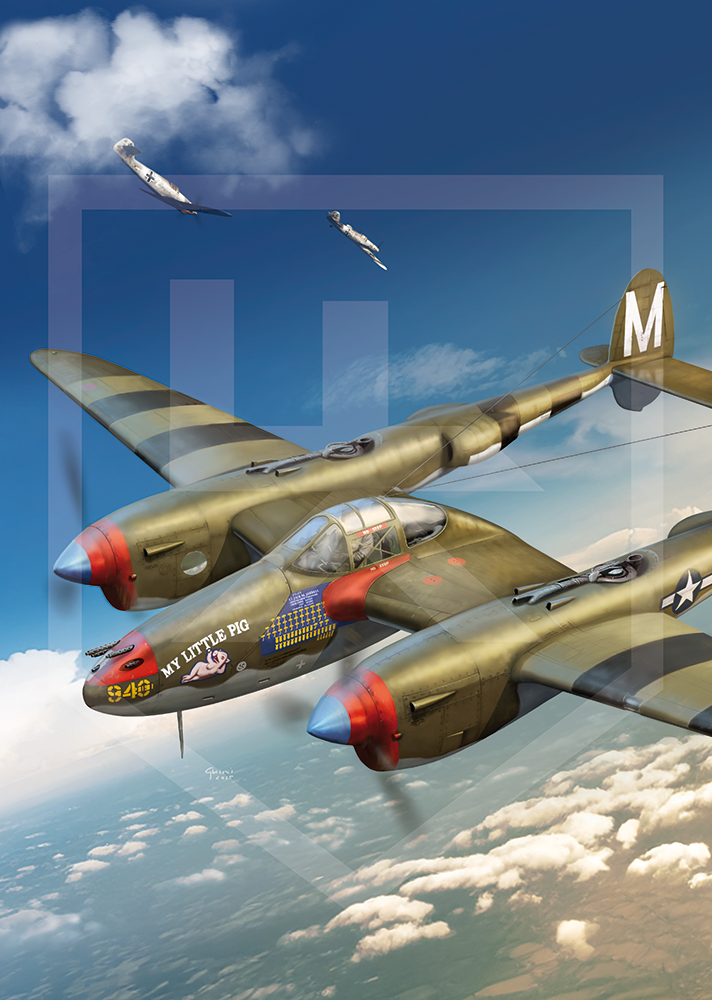
Lockheed P-38J Lightning (1944)
An American twin-boom fighter aircraft.
The P-38 My Little Pig, piloted by Lt. Jack Jarell, was shot down on December 14, 1944.
Cover of a paper model by WAK.
(2025)
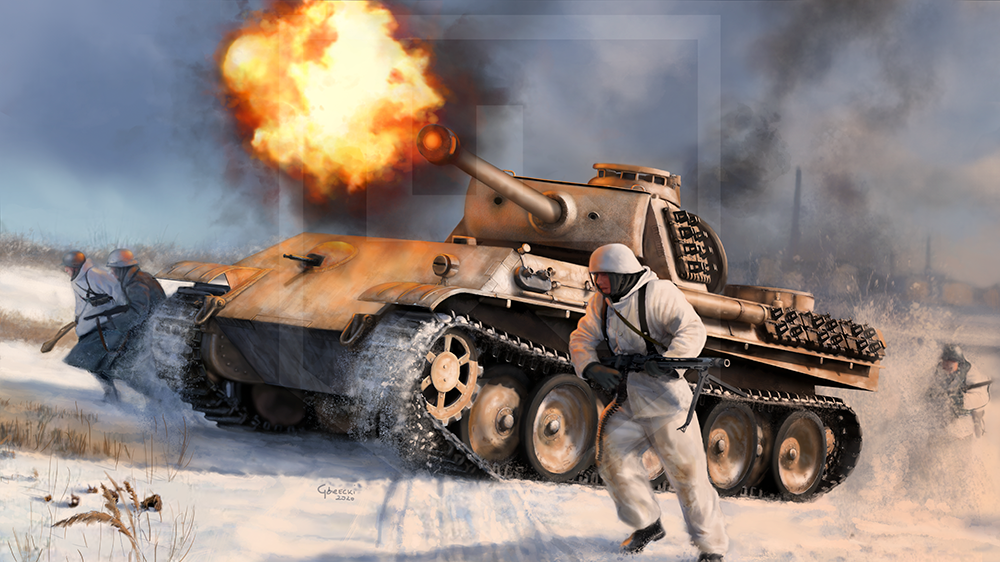
Battle of Poznań (1945)
January 27, 1945. The 7th day of the battle for Poznań. In the early afternoon, a group of tanks from the German Armored Strike Group defending Poznań against the Russians, supported by infantry, launched a counterattack to the south.The illustration shows one of the two Panther tanks that fought in Poznań.
Part of the permanent exhibition at the Museum of Armament in the Poznań Citadel. (2020)

Battle of Poznań (1945)
February 5, 1945. The 16th day of the battle for Poznań. Left-flank assault groups of the 226th Regiment reached Estkowskiego Street. From there, an attack along the Warta River towards the Citadel began.The illustration depicts an SU-152 self-propelled gun, which was destroyed shortly afterward near the Chwaliszewski Bridge.
Part of the permanent exhibition at the Museum of Armament in the Poznań Citadel. (2020)
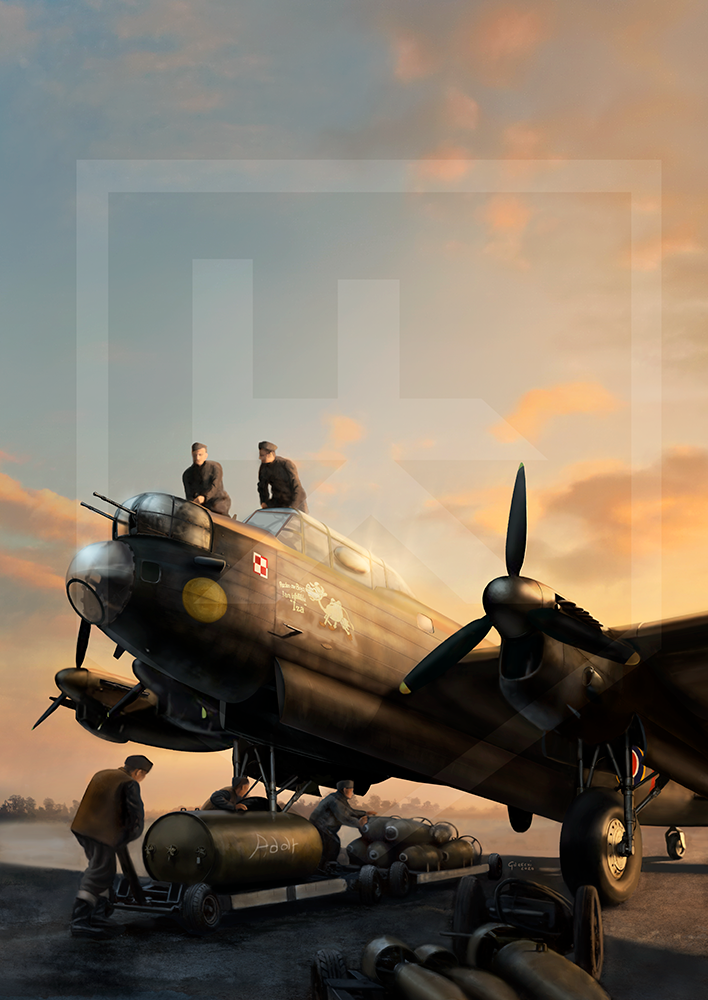
Avro Lancaster MK III (1945)
A heavy, four-engine bomber of British design. It was developed from the twin-engine heavy bomber Avro Manchester. Its spacious bomb bay and long range made it the primary bomber of the RAF.
The illustration depicts the crew of a Lancaster Mk III from the 300th Bomber Squadron (Land of Mazovia) before a combat mission over Germany.
Illustration for the cover of the book Avro Lancaster I/III (Stratus 2021).

Avia S-199 (1949)
A Czechoslovak fighter aircraft from the second half of the 1940s. Its construction was based on design plans and parts from Luftwaffe aircraft left after the end of World War II.
The illustration features an Avia S-199 from the 7th Fighter Aviation Regiment.
Cover of the book Aircraft of the Czech Pilots (Kagero, 2024).
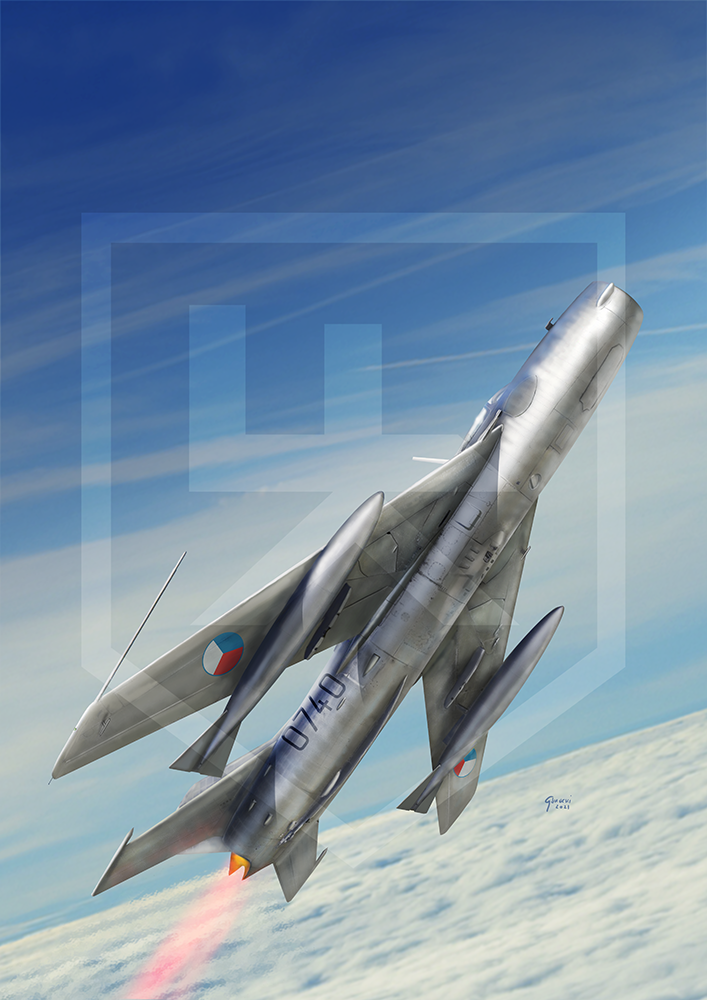
Mikojan MiG-19P
A Soviet jet fighter aircraft designed in the 1950s at the MiG design bureau.
The illustration depicts a MiG-19P from the 11th Fighter Aviation Regiment.
Cover of the book Warsaw Pact Vol. II (Kagero, 2021).

Mikoyan-Gurevich MiG-29A (1998)
A frontline fighter of Soviet production. Aircraft of this version were exported to Warsaw Pact countries, including Poland.
The illustration depicts a MiG-29A from the 1st Fighter Aviation Regiment during the “Co-operative Change 1998” exercises. This aircraft was one of ten MiG-29As transferred to Poland by the Czech Republic. (2022)
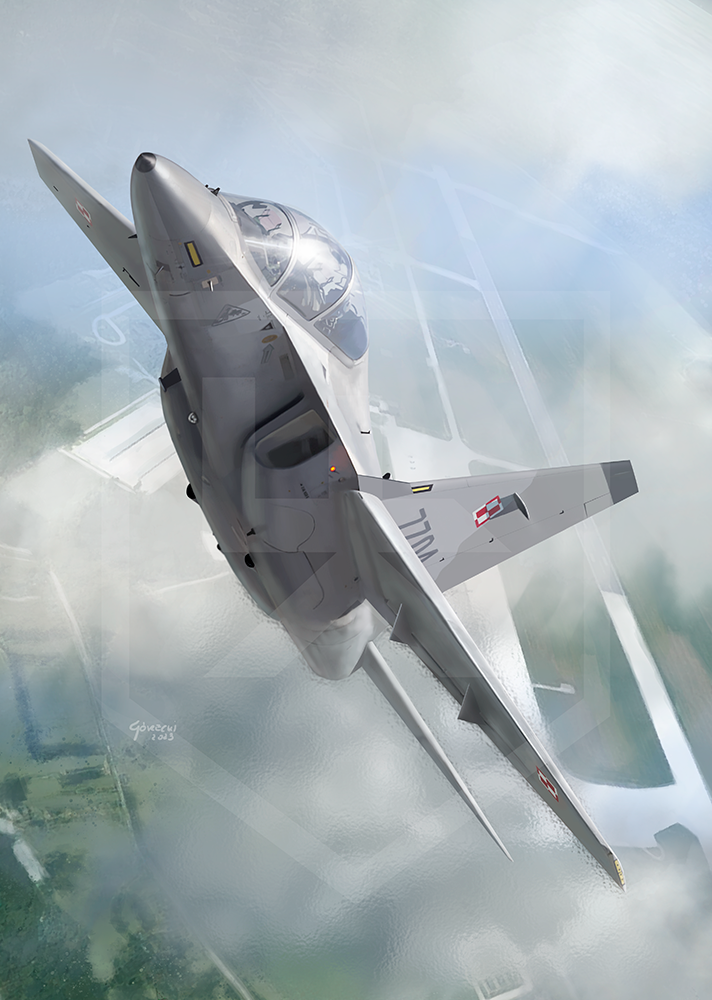
M-346 Bielik (2022)
An Italian training aircraft, designed based on the Russian Yak-130. The M-346 has been operated by the Polish Air Force since 2018, replacing the aging TS-11 Iskra.
Cover for a paper model by WAK. (2025)

BTR-4E (2022)
A Ukrainian-made wheeled armored personnel carrier. It comes in several variants, including an infantry fighting vehicle, a command vehicle, and a platform for various types of weaponry.
Cover of a cardboard model by WAK (2023).

BWP Borsuk (2023)
A Polish infantry fighting vehicle capable of operating in various terrain and climatic conditions. Designed to overcome water obstacles, its primary role is to support the battlefield.
Cover of the cardboard model by WAK (2024).
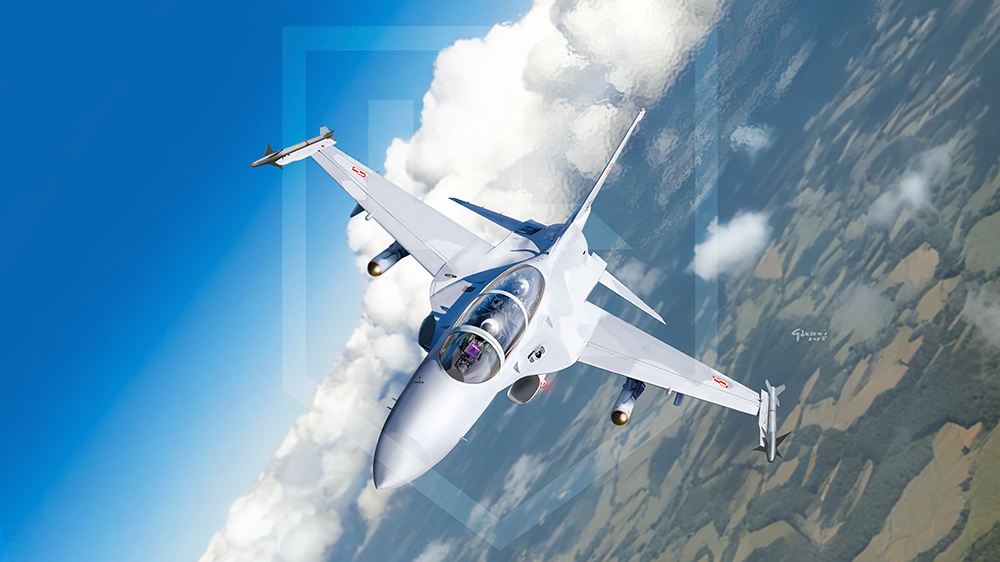
KAI FA-50GF (2024)
A South Korean advanced trainer and light combat aircraft produced since 2002 by Korea Aerospace Industries, based in Sacheon, South Korea, in cooperation with the American company Lockheed Martin.
Box art for a Hobby2000 model kit.
(2024)
